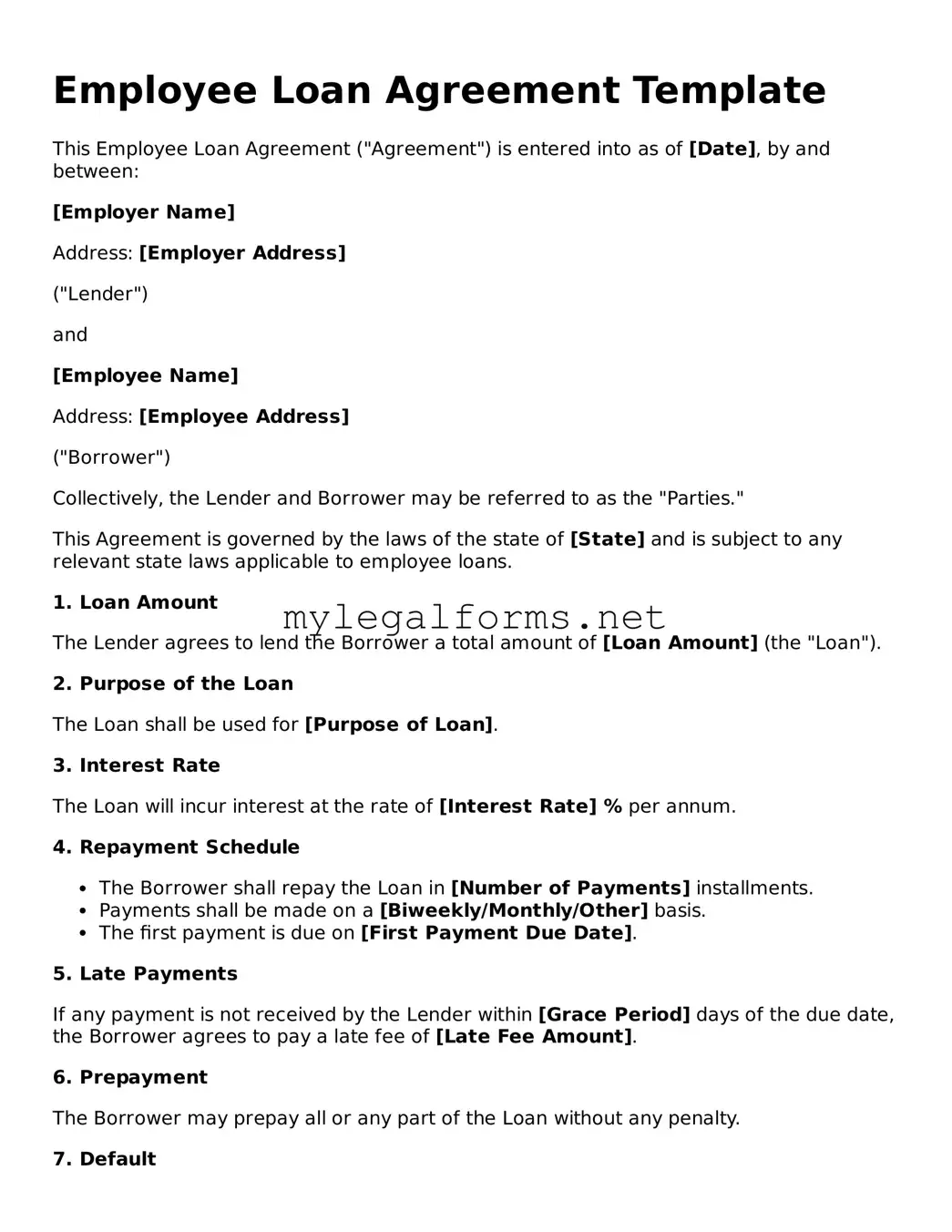Employee Loan Agreement Template
This Employee Loan Agreement ("Agreement") is entered into as of [Date], by and between:
[Employer Name]
Address: [Employer Address]
("Lender")
and
[Employee Name]
Address: [Employee Address]
("Borrower")
Collectively, the Lender and Borrower may be referred to as the "Parties."
This Agreement is governed by the laws of the state of [State] and is subject to any relevant state laws applicable to employee loans.
1. Loan Amount
The Lender agrees to lend the Borrower a total amount of [Loan Amount] (the "Loan").
2. Purpose of the Loan
The Loan shall be used for [Purpose of Loan].
3. Interest Rate
The Loan will incur interest at the rate of [Interest Rate] % per annum.
4. Repayment Schedule
- The Borrower shall repay the Loan in [Number of Payments] installments.
- Payments shall be made on a [Biweekly/Monthly/Other] basis.
- The first payment is due on [First Payment Due Date].
5. Late Payments
If any payment is not received by the Lender within [Grace Period] days of the due date, the Borrower agrees to pay a late fee of [Late Fee Amount].
6. Prepayment
The Borrower may prepay all or any part of the Loan without any penalty.
7. Default
If the Borrower fails to make any payment when due, the Lender may declare the entire Loan amount due and payable.
8. Governing Law
This Agreement shall be governed by the laws of the state of [State], without regard to its conflict of laws principles.
9. Amendments
This Agreement may only be amended in writing, signed by both Parties.
IN WITNESS WHEREOF, the Parties have executed this Employee Loan Agreement as of the date first above written.
Employer:
__________________________
Signature
__________________________
Name
__________________________
Title
Employee:
__________________________
Signature
__________________________
Name
This document is provided as a template and may not cover all circumstances. It is advisable for Parties to seek legal counsel before entering into any agreement.
